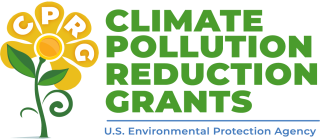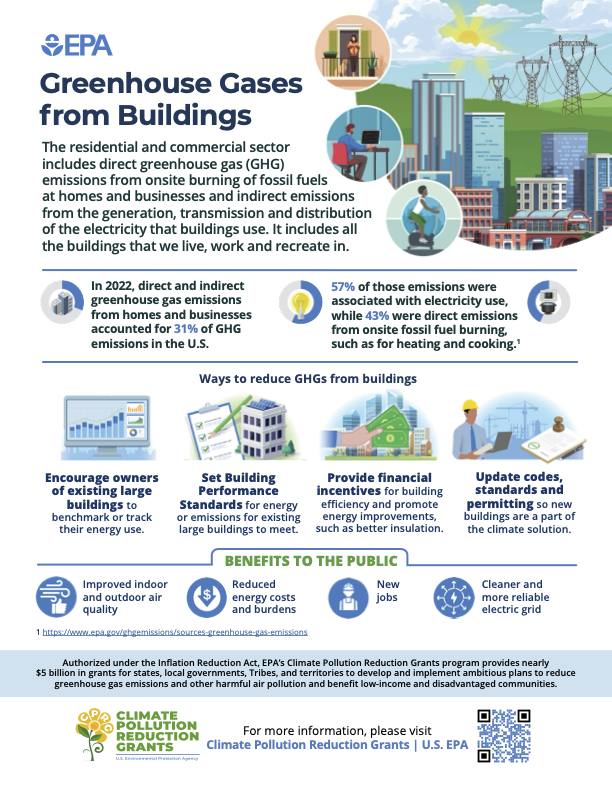CPRG Selected Applications by Sector - Buildings

The residential and commercial buildings sector includes direct greenhouse gas (GHG) emissions from onsite burning of fossil fuels at homes and businesses and indirect emissions from the generation, transmission and distribution of the electricity that buildings use. It includes all the buildings that we live, work and recreate in.
- In 2022, direct and indirect greenhouse gas emissions from homes and businesses accounted for 31% of GHG emissions in the U.S.
- Fifty-seven percent of those emissions were associated with electricity use, while 43% were direct emissions from onsite fossil fuel burning, such as for heating and cooking.
The following selected applications include proposed projects in the buildings sector:
General Competition Selections
- Central Midlands Council of Governments (South Carolina)
- City of New Haven (Connecticut)
(Coalition Members: New Haven Parking Authority, Housing Authority of New Haven) - City of New Orleans (Louisiana)
- Colorado Energy Office
- Connecticut Department of Energy and Environmental Protection
(Coalition Members: Maine Governor’s Office of Policy Innovation and the Future, Massachusetts Department of Energy Resources, New Hampshire Department of Environmental Services, Rhode Island Office of Energy Resources) - Denver Regional Council of Governments (Colorado)
- Illinois Environmental Protection Agency
- King County (Washington)
- Metroplan (Arkansas)
(Coalition Members: City of Fort Smith, Northwest Arkansas Regional Planning Commission) - Minnesota Pollution Control Agency
- Nebraska Department of Environment and Energy
- Nez Perce Tribe
- Oregon Department of Environmental Quality
- Southeast Conference (Alaskan Southern Coastal Communities)
- Utah Department of Environmental Quality
Tribes and Territories Competition Selections
- Alaska Native Tribal Health Consortium
- Bad River Band of Lake Superior Chippewa Indians
- Iowa Tribe of Kansas and Nebraska (ITKN)
- La Jolla Band of Luiseño Indians
- Lac Vieux Desert Band of Lake Superior Chippewa Indians
(Coalition Member: The Midwest Tribal Energy Resource Association (MTERA)) - Lower Sioux Indian Community (LSIC) in the State of Minnesota
- Miccosukee Corporation
- Mississippi Band of Choctaw Indians
- Municipality of Saipan, Office of the Mayor
- Narragansett Indian Tribe
- Nez Perce Tribe
- Nisqually Indian Tribe
- Nottawaseppi Huron Band of Potawatomi
- Passamaquoddy Tribe Indian Township
- Salt River Pima-Maricopa Indian Community
- Spirit Lake Tribe
- St. Croix Chippewa Indians of Wisconsin
- Village of Solomon
(Coalition Members: King Island Native Community, Nome Eskimo Community, and Native Village of Council)

View or download the CPRG Sector Infographic - Buildings (pdf) or view the text version.
About Climate Pollution Reduction Grants
Authorized under the Inflation Reduction Act, EPA’s Climate Pollution Reduction Grants program provides nearly $5 billion in grants for states, local governments, Tribes, and territories to develop and implement ambitious plans to reduce greenhouse gas emissions and other harmful air pollution and benefit low income and disadvantaged communities.
